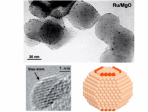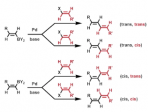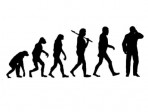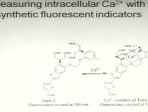Advances in Olefin Metathesis Employing Molybdenum and Tungsten Catalysts
Olefin metathesis is an irresistible way to make C=C bonds catalytically in organic molecules and polymers, both as a consequence of its very nature, i.e. the synthesis of C=C bonds from C=C bonds, and because of the control that can be exercised thr....
More details | Watch now 00:32:00
00:32:00
Aquaporin Water Channels – From Atomic Structure to Malaria
Aquaporin channels allow water to rapidly cross cell membranes in all living organisms. AQP1 confers red cells and proximal renal tubules with high water permeability. Present in renal collecting duct, AQP2 is regulated by vasopressin, and human muta....
More details | Watch now 00:23:00
00:23:00
Atmospheric Chemistry and Climate in the Anthropocene
Despite their relatively small mass, 10% of the earth biosphere as a whole, generations of ambitious ‘homo sapiens’ have already played a major and increasing role in changing basic properties of the atmosphere and the earth’s surface. Human ....
More details | Watch now 00:32:00
00:32:00
C60-Buckminsterfullerene: Not just a Pretty Molecule
Amongst the Nobel Laureates lecturing in Lindau, Sir Harold Kroto would probably earn the award for the most unusual and characteristic way of presenting. This lecture, which is the first he ever gave in Lindau, is no exception. Kroto`s way of presen....
More details | Watch now 00:30:00
00:30:00
Catalysis at Surfaces: From Atoms to Complexity
Catalysis by solid surfaces is, among others, of importance for the chemical industry (e.g. the Haber-Bosch process) as well as for environmental chemistry (car exhaust catalyst). Surface physical techniques enable investigation of the underlying e....
More details | Watch now 00:31:00
00:31:00
Catalysis at Surfaces: From Atoms to Complexity
This lecture addresses the question if spatio-temporal self-organisation of matter which is so characteristic for living systems can also be verified with a simple inorganic reaction in which the observed phenomena of complexity can be traced back to....
More details | Watch now 00:31:00
00:31:00
Chemistry: the Key to Our Future
Chemistry is not merely a science of making observations in order to better understand Nature. Our science is creative and productive, generating substances of very high value from almost nothing. Chemists already have made enormous contribution to....
More details | Watch now 00:30:00
00:30:00
Cross-Coupling Reactions of Organoboranes: An Easy Way for Carbon-Carbon Bonding
The palladium-catalyzed cross-coupling reaction between different types of organoboron compounds and various organic halides in the presence of base provides a powerful and general methodology for the formation of carbon-carbon bonds. The (sp3)C-B ....
More details | Watch now 00:46:00
00:46:00
Darwinian evolution as understood by scientists of the 21st century
After a short reminder of the historical development of evolutionary biology, elements to a molecular theory of Darwinian evolution will be presented. Biological evolution is driven by the availability of genetic variants in populations. The occasi....
More details | Watch now 00:35:00
00:35:00
Designing Molecules and Nanoparticles to Help See and Treat Disease
Molecules to observe and manipulate biological systems can be devised by a variety of strategies, ranging from pure chemical design and total synthesis to genome mining and high-throughput directed evolution. Examples of both successes and failures a....
More details | Watch now 00:49:00
00:49:00
Dynamics of Chemical Reactions
Every macroscopic chemical transformation, whether it is atmospheric ozone depletion or the burning of a candle, consists of millions of microscopic chemical events, which involve collisions between molecules. It has been the dream of scientists fo....
More details | Watch now 00:29:00
00:29:00
Electron Transfer Theory in Single Molecule Studies of Intermittent Fluorescence of Quantum Dots and in Initial Steps in Dye Sensitized Solar Cells
Intermittently fluorescing single molecule systems are found in many materials, including semiconductor quantum dots (QD), dyes on crystalline or nanoparticle film surfaces, and biological systems. The QD's show a ~ -3/2 power law for the distributio....
More details | Watch now
